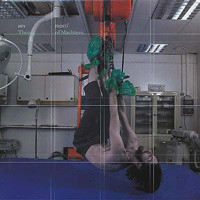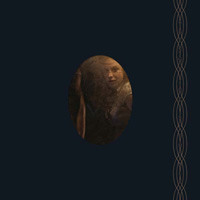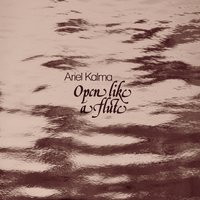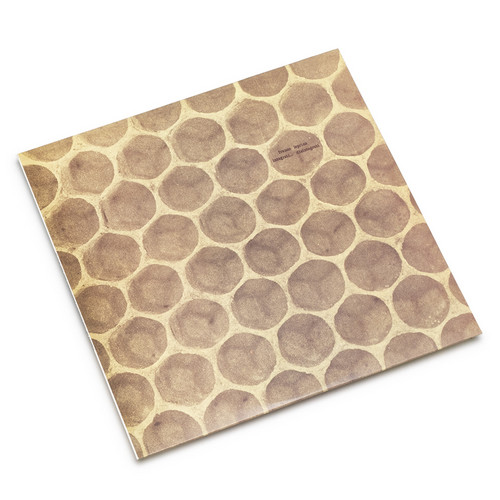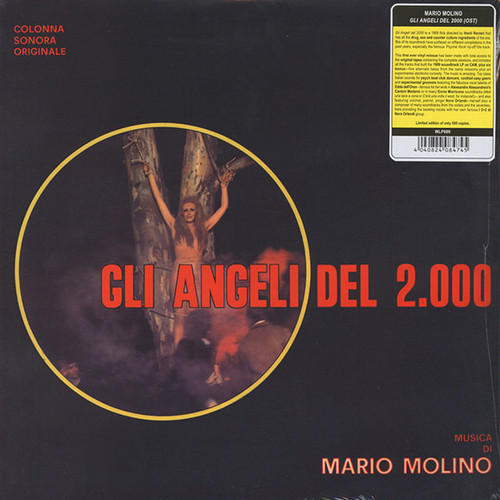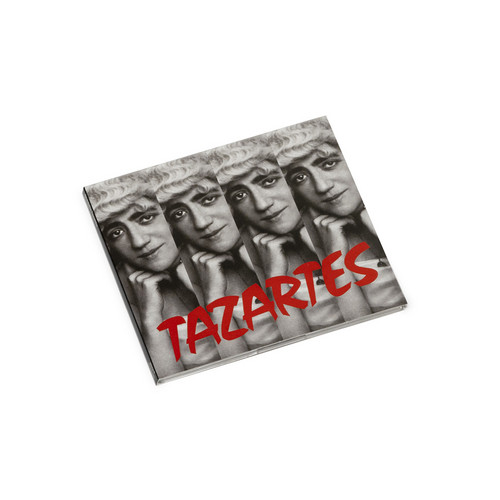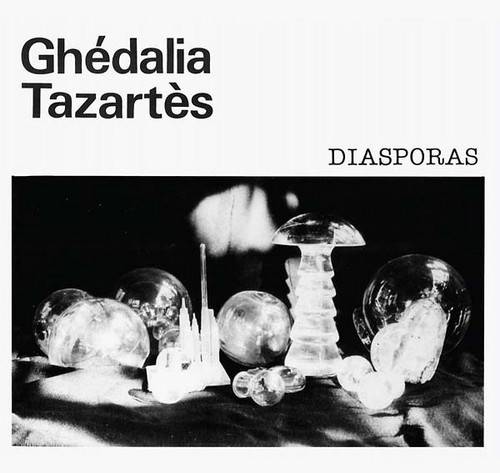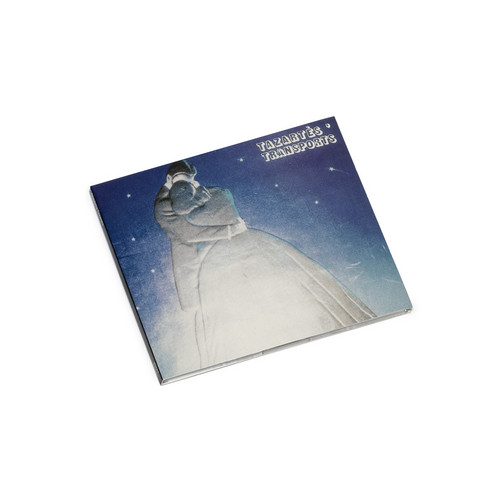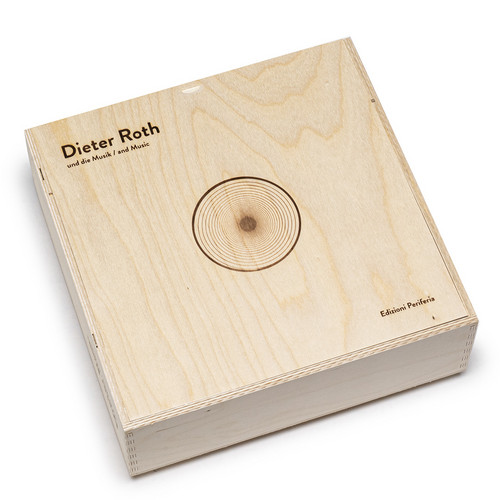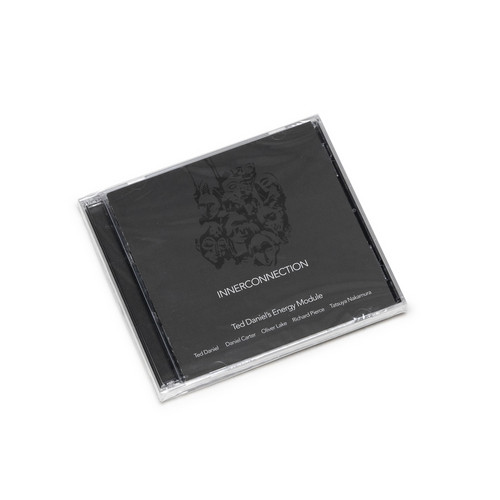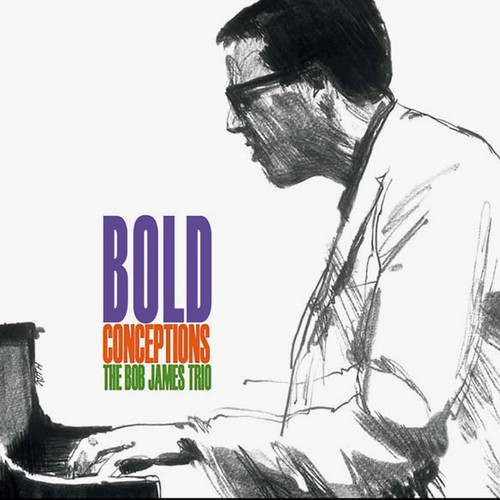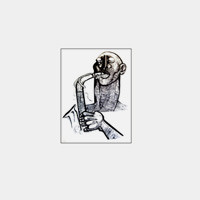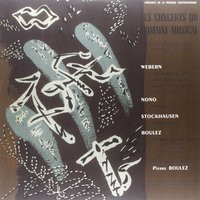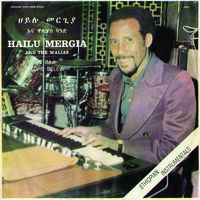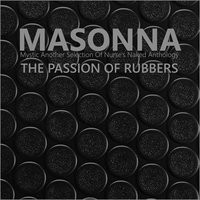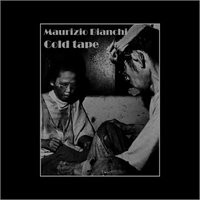Reissues
Theory Of Machines
2014 repress, originally released in 2007. Includes mp3 download. This is Reykjavik-based composer/producer Ben Frost's first release for the Icelandic Bedroom Community label. From the ominous darkness and intensity of its opening moments, one might expect a death metal album to break out in an instant, but Theory Of Machines is an album whose design is as symphonic as it is confrontational -- the tempo doesn't pick up, no hooks or vocals arrive, and when the drums finally kick in, they're…
The Summoner
LP version; presented in a laser-cut full color bronze and black sleeve with full color insert. Includes download code. The Summoner comes four years after the last Kreng album Grimoire (MIA 016CD/LP) and three years after the massive retrospective box set Works for Abattoir Fermé 2007-2011. A lot has happened in the interim, and The Summoner can be seen as quite the departure from the aforementioned works. Pepijn Caudron's most personal album to date, The Summoner was created after a year in wh…
Open Like a Flute
Finally!!!! Here it is, in stock. This double album is a combination of two Ariel Kalma releases under the same name ‘Open Like a Flute’: the original Astral Muse cassette released in Canada 1982, and the Nightingale cassette from 1984, recorded from 1981 to 1984 in Montreal, Paris and Hamburg.
For these records, Ariel converted his 1/4’’ analog tape masters from the 80’s to 24bit digital tracks. Ah, the analog warmth! Released just after his classic album ‘Osmose’, these tapes are a perfe…
Integrati... Disintegrati
It was 1977, the year when punk rock exploded in the face of disco-music, but some thinking heads in Italy managed to escape the set trends of the year and walk a totally different path. Pioneers like Franco Battiato had already been experimenting with a crash of rock and electroacoustic music since the beginning of the decade, and others like Roberto Cacciapaglia or Riccardo Zappa would explore farther in those lands, mixing acoustic instruments with the bourgeoning synth technology. Among all …
Gli Angeli del 2000
Wow! We are very happy to bring back to light this fantastic soundtrack by one of the most underrated Italian musicians. It is well known the rich musical heritage that the Italian film industry has left us, and all those who enjoy the likes of Ennio Morricone, Alessandro Alessandroni, Piero Piccioni, Piero Umiliani, Riz Ortolani, Armando Trovajoli et al. will welcome Gli Angeli del 2000 to their collections. If you are into soundtracks or library music you probably already think that even if no…
Tazartes
Remastered CD edition of Tazartès, Ghédalia Tazartès' 1987 fourth LP. Now available as an expanded individual CD, this edition was previously only available as part of a CD containing both Tazartès and Diasporas, Tazartès' 1979 debut album, which is also now available in an expanded CD edition (TES 088CD). Immersive, transporting, and deeply arresting music from the revered autodidact and audio oddity. If you've never encountered Tazartès before, this is an excellent place to start, welco…
Diasporas
2015 Remastered CD edition of Diasporas, Ghédalia Tazartès' 1979 debut LP. Now available as an expanded individual CD, this edition was previously only available as part of a CD containing both Diasporas and Tazartès' 1987 self-titled fourth album, which is also now available in an expanded CD edition (TES 089CD). In addition to the entire original release of Diasporas, this CD includes the first CD release of "Ferme ta gueule, Zarathustra," a composition largely based on materials pre-datin…
Une Éclipse Totale De Soleil
2015 repress and remastered. Remastered CD edition of Une éclipse totale de soleil, Ghédalia Tazartès' third LP, originally released in 1984. Far away from contemporary music intellectualisms and the works of synthetic noise purists, this album features a new form of musical expression and is certainly one of the most original and creative records of the '80s. The value of this work was at the time underestimated and only a few people had a chance to listen to this beautiful music. The rec…
Tazartes Transports
2015 repress. Remastered CD edition of Tazartès' Transports, autodidact and outsider composer Ghédalia Tazartès' 1980 second LP. This album probably represents the most original example of the artist's poetical and personal approach to sound organization. The tracks for Tazartès' Transports, recorded in 1977 at Tazartès' own studio in Paris, are blends of stream-of-consciousness rippling electro rhythms, outer-national singing styles, collaged field recordings, tape loops, and chants. The …
Dieter Roth and Music
**Restocked, reduced price** One time limited edition of 300 copies. Amazing art edition in a sturdy plywood box with 3 LP in gatefold-cover (Recorded live at Musik-Akademie Basel, Grosser Saal, 2. February 1977) with a fascimile poster announcing the original Quadrupelkonzert, plus one DVD and six books
The oeuvre of the internationally renowned Swiss artist Dieter Roth reflects the multiplicity of his talents. He was active not just as a visual artist, writer, graphic artist, jewellery and fur…
Discography
Restocked, reduced price. Awesome catalogue raisonné of Dieter Roth’s work as musician and music publisher. There is a long list of records, CDs and cassettes that document the music of Dieter Roth. He played in many ensembles and made recordings, both in public concerts and in private spaces. One important series of audio documents is the collection of different records with the collective title Rarely heard music. These recordings were made in collaboration with friends and artist colleagues s…
Innerconnection
Unreleased session from 1975. "Trumpeter Ted Daniel's Energy Module was a short-lived band. They played exactly two gigs in the course of one week in the fall of 1975-and never played again. They gelled quickly as a quintet, however, in large part because everyone knew each other from working in Daniel's big band, Energy. However, the Energy Module was a less formal affair than the large ensemble, in which they played Daniel's original compositions and arrangements. "We had a couple of re…
Interconnection
Big Tip! Unreleased session from 1975."Trumpeter Ted Daniel's Energy Module was a short-lived band. They played exactly two gigs in the course of one week in the fall of 1975-and never played again. They gelled quickly as a quintet, however, in large part because everyone knew each other from working in Daniel's big band, Energy. However, the Energy Module was a less formal affair than the large ensemble, in which they played Daniel's original compositions and arrangements. "We had a couple of r…
Bold Conceptions
This is the original Bob James; his very first album, in fact, recorded at age 22 (and produced by Quincy Jones) as a prize for winning the 1962 Collegiate Jazz Festival.
Gideon plays LP
"Recorderd in 1968, here we have a very rare South African jazz album, only two copies known in the whole wide world: one in the hand of a SA prime minister and the other one in the hand of an art gallery owner (= original it's practically impossible to find ?!). this new edition had been re-mastered and cleaned, with different art on cover but by the same fine artist. a very unique record with such an unusual instrument combination, all songs written by Mr. Nxumalo who is surely an origin…
Native North America (Vol. 1): Aboriginal Folk, Rock, and Countr
Largely unheard, criminally undocumented, but at their core, utterly revolutionary, the recordings of the diverse North American Aboriginal community will finally take their rightful place in our collective history in the form of Native North America (Vol. 1): Aboriginal Folk, Rock, and Country 1966–1985. An anthology of music that was once near-extinct and off-the-grid is now available for all to hear, in what is, without a doubt, Light In The Attic’s most ambitious and historically signi…
Le Concerts du Domaine Musical 1956
Doxy presents a reissue of "Les Concerts du Domaine Musical", originally released by the French label Véga in 1956. Le Domaine Musical was a concert society established by Pierre Boulez in Paris, which was active from 1954 to 1973. Boulez intended to provide opportunities for new music, after a general musical migration from Germany and Austria to Paris in the wake of those countries' legacy of war-torn decades without music. Le Domaine Musical created an exciting milieu in which the best an…
Musicawi Silt / Tche Belew
"Musicawi Silt" is the best known Ethiopian song from Addis Ababa's golden era of 1970s pop music. The insistent drive of the rhythm and the mighty blast of the horns - a sublime, angular burst - are unmistakable. Hailu Mergia's concept for the Walias first LP "Tche Belew" was to include compositions by various band members. Since Girma Beyene, a member of the Walias, wrote this addictive song in the mid-70s and the Walias band began including it in their sets, it has spread around the wo…
The Passion Of Rubbers
The question of what’s one’s favorite item from their collection (or accumulation) consistently pops up in conversations amongst fans and collectors, and this unquestionably is always my answer. From head-to-toe, insert-to-tape, all elements are in glorious harmony and conversation with what another. Having the G.R.O.S.S. label’s ’industrial design’ fetish/obsession (some would say a relatively antiseptic departure from much of the other noise tapes of the time) articulating the sexualize…
Cold Tape
Maurizio Bianchi began to produce music in 1979, since 1980 using electronic equipment with the avowed goal "to produce technological sounds and in such a way to work on complete realising of the modern decadence". In the beginning, he published tapes under the alias Sacher-Pelz. Cold Tape that follow Voyeur Tape and close the tetralogy begun with Industrial Tape, was recorded in August 1980 under the name MB.Cold Tape is composed of two long and exquisite pieces, with muddy and powerful sounds.…
